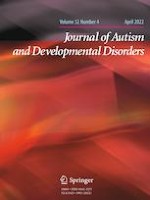14-05-2021 | Original Paper
Testing a Model of Sexual Minority Orientation in Individuals with Typical Development, the Broad Autism Phenotype, and Autism Spectrum Disorder
Gepubliceerd in: Journal of Autism and Developmental Disorders | Uitgave 4/2022
Log in om toegang te krijgenAbstract
Individuals with Autism Spectrum Disorder (ASD) and the Broad Autism Phenotype (BAP) are more likely than individuals with typical development (TD) to report a sexual minority orientation (e.g., Bejerot and Eriksson, PLoS ONE 9:1–9, 2014; DeWinter et al., Journal of Autism and Developmental Disorders 47:2927–2934, 2017; Qualls et al., Journal of Autism and Developmental Disorders 48:3974–3983, 2018). This study operationalized and tested the fit of an existing model of sexual orientation to examine which factors are associated with increased sexual minority orientation (Worthington et al., The Counseling Psychologist 30:496–531, 2002) in individuals with TD, BAP, and ASD. The model was found to have adequate fit, χ2 (130) = 374.04, p < 0.001; RMSEA = 0.07; CFI = 0.95; SRMR = 0.08. Heterosexism was found to be the only predictor of sexual minority orientation and a significant predictor in the BAP and ASD groups, with increased daily heterosexist experiences predicting greater sexual minority orientation in these groups.
